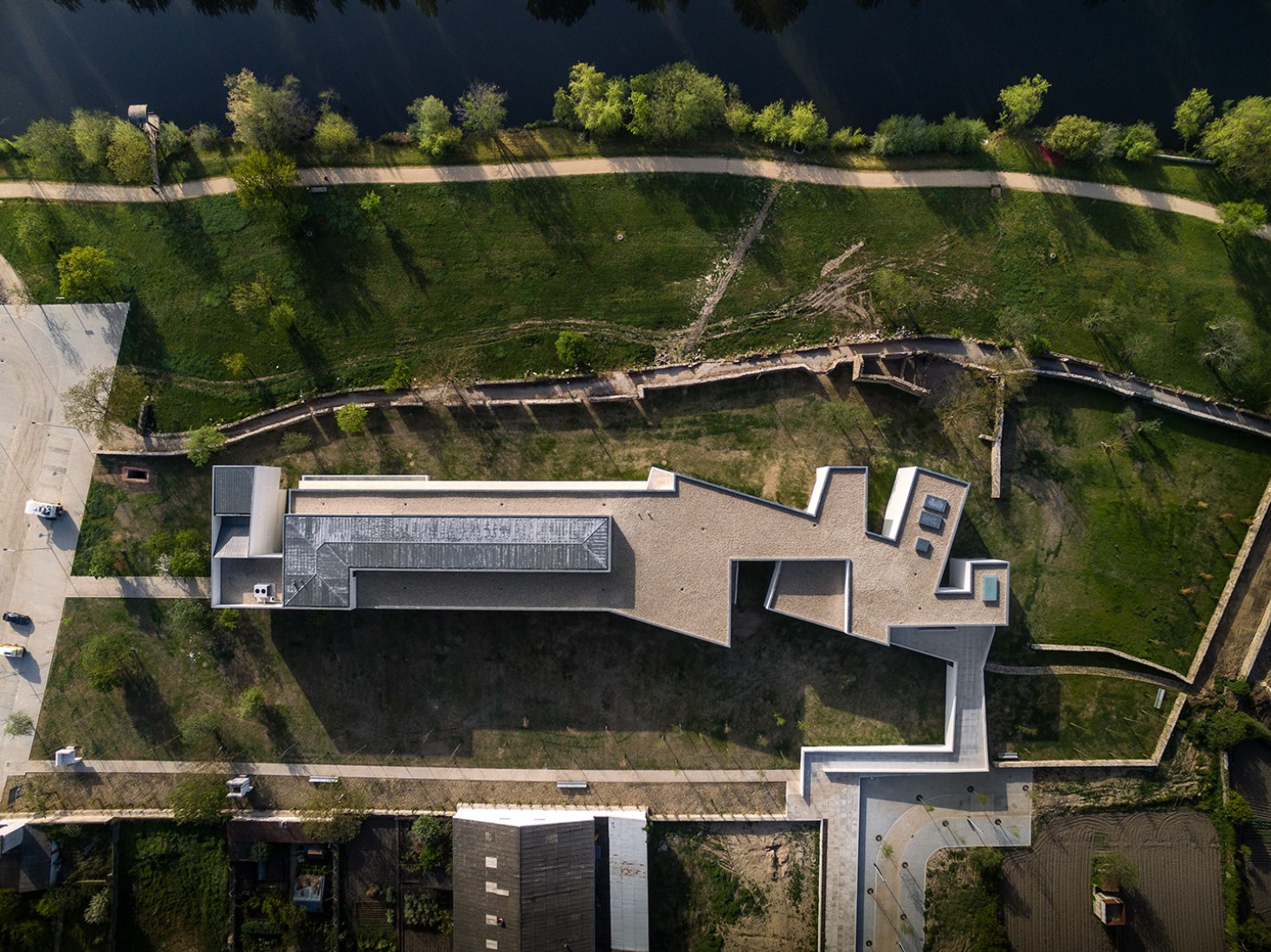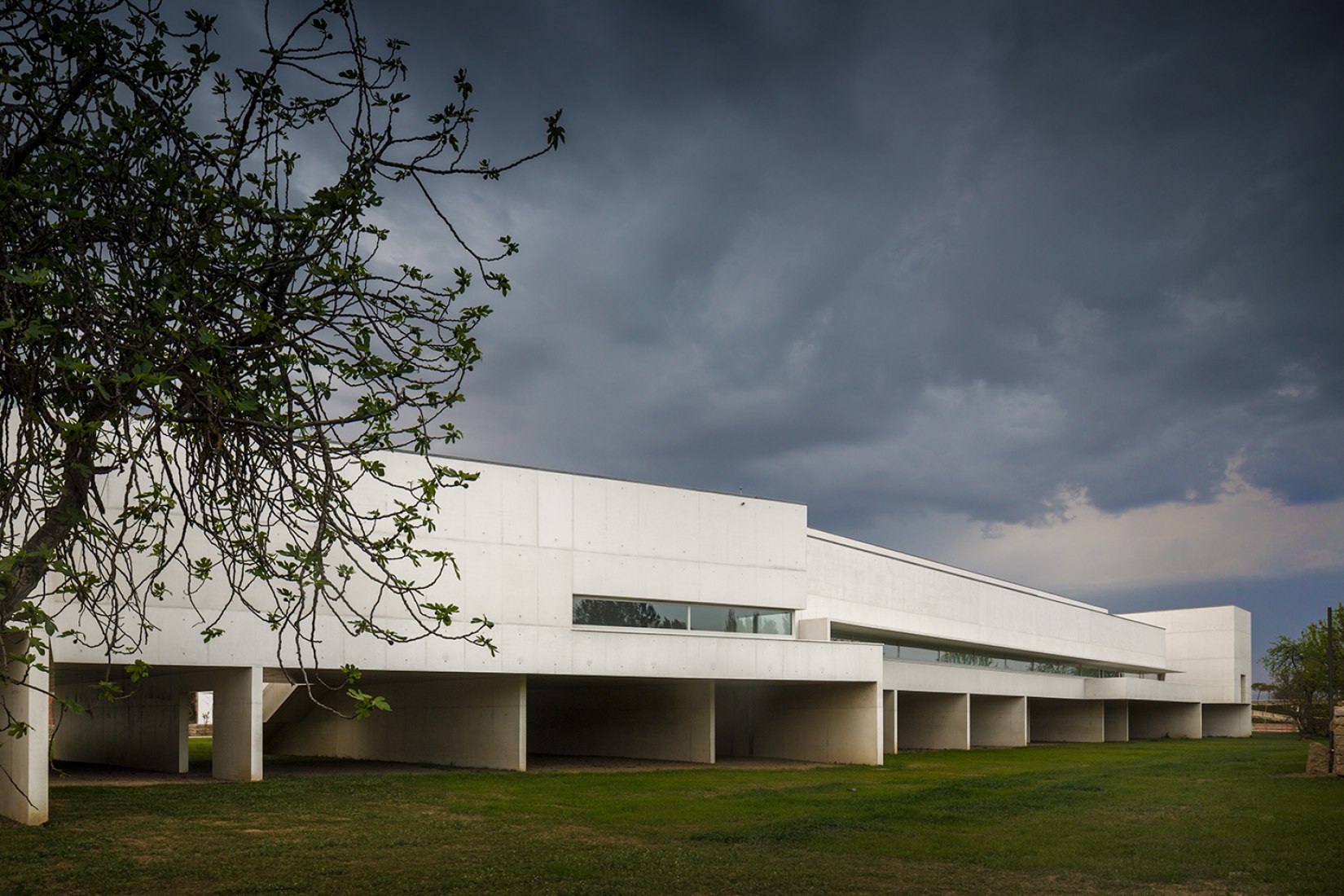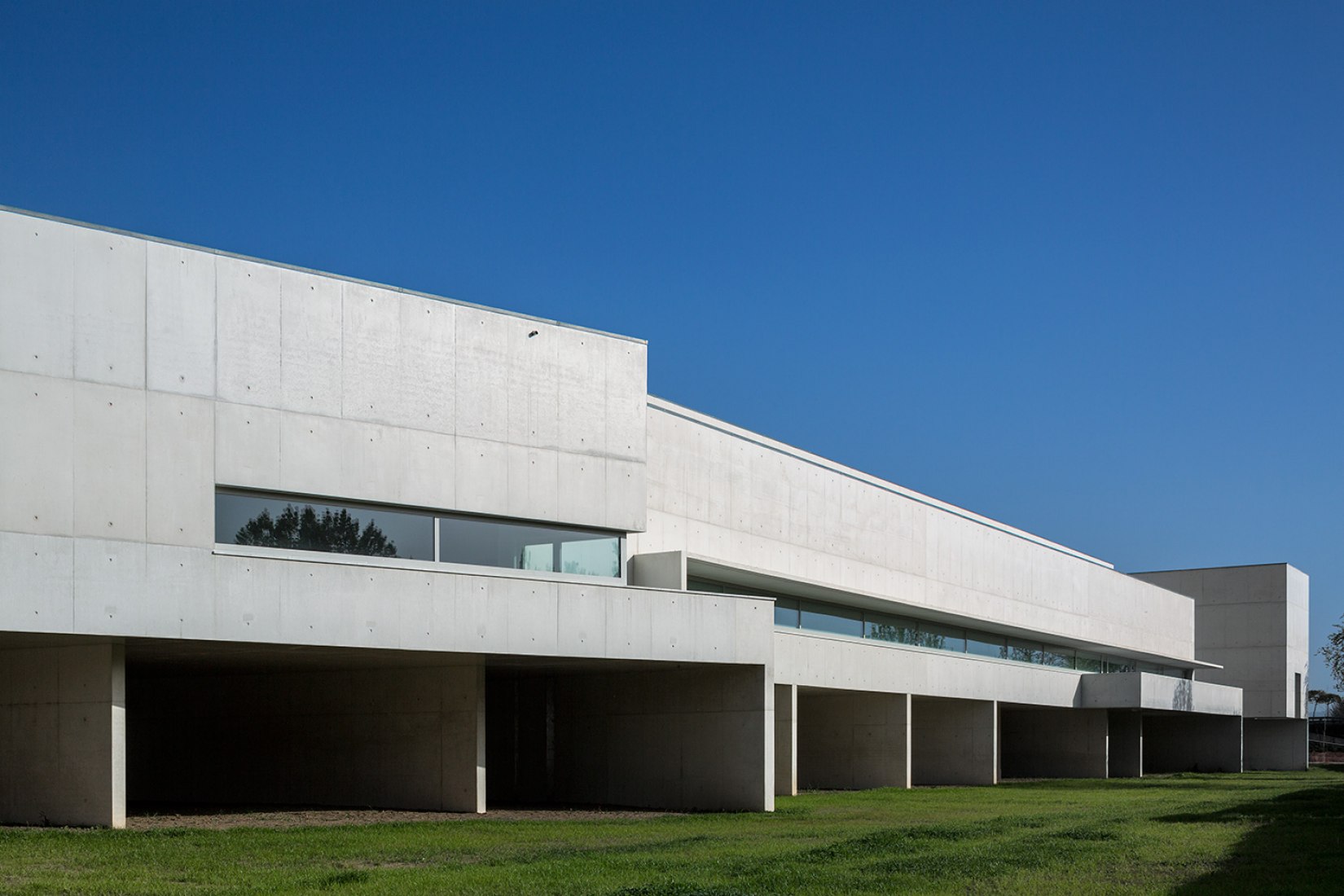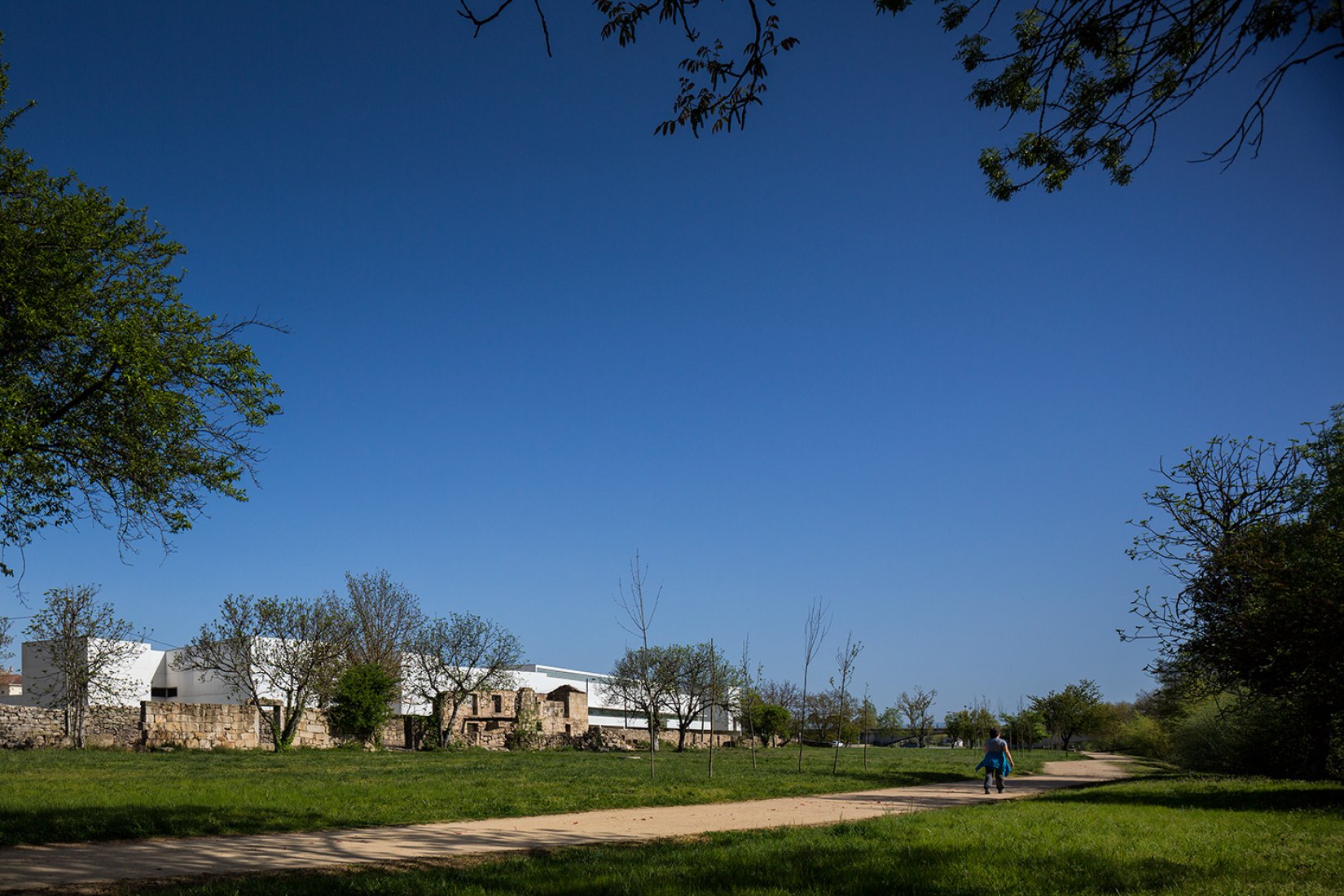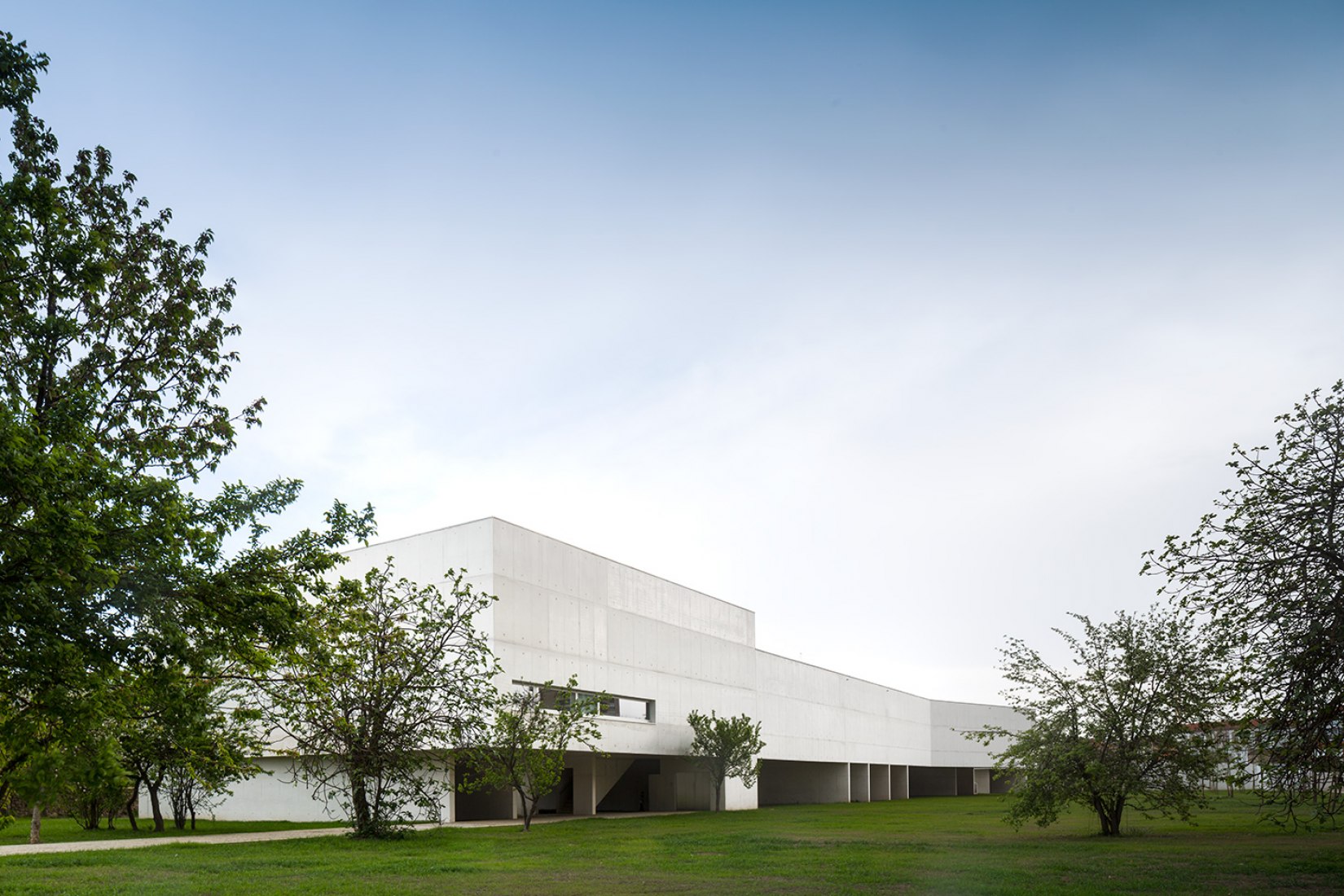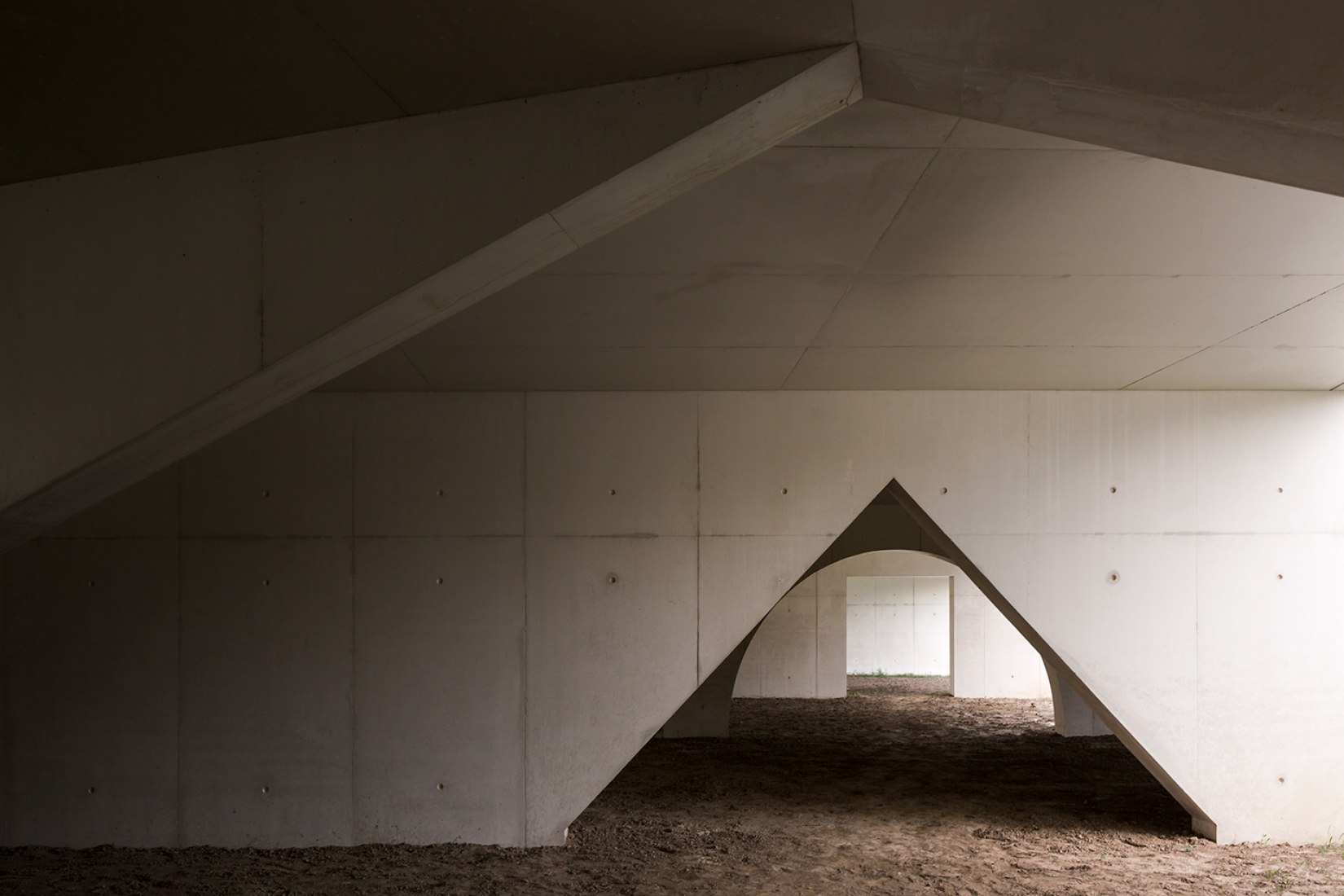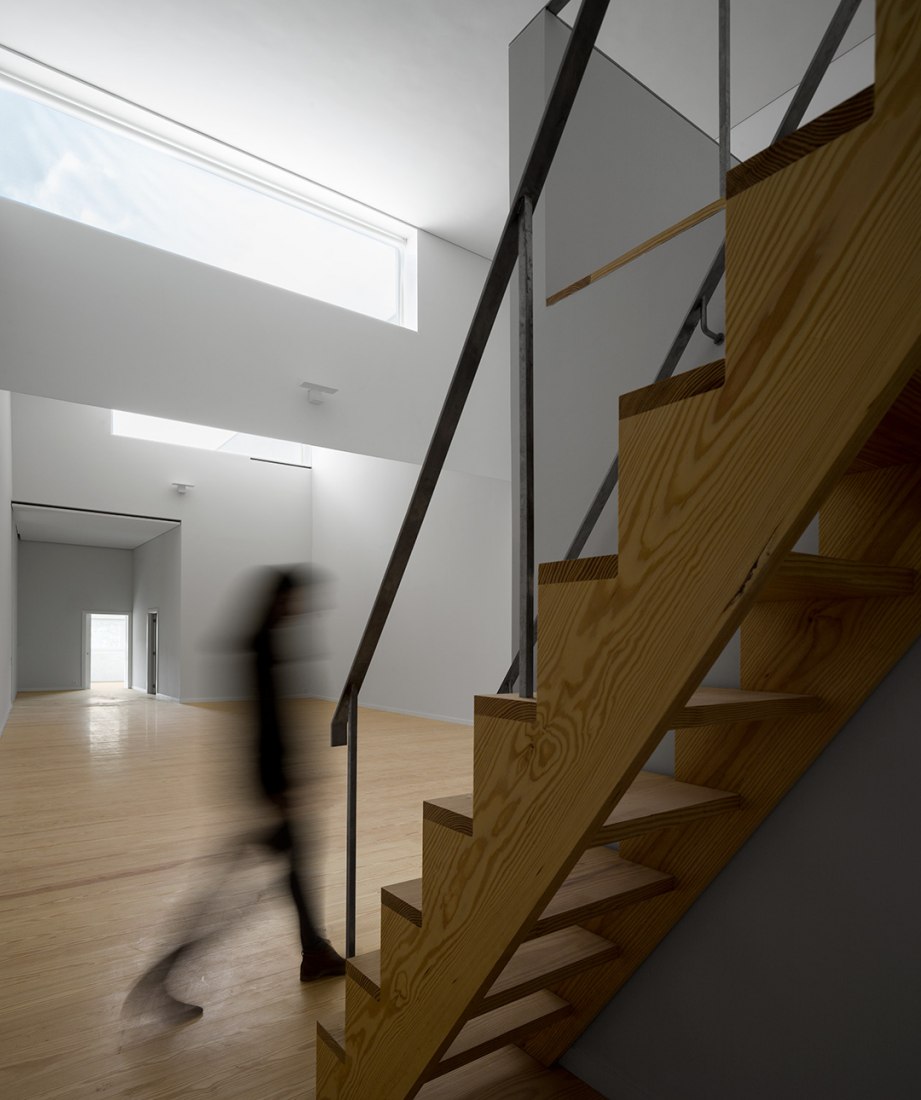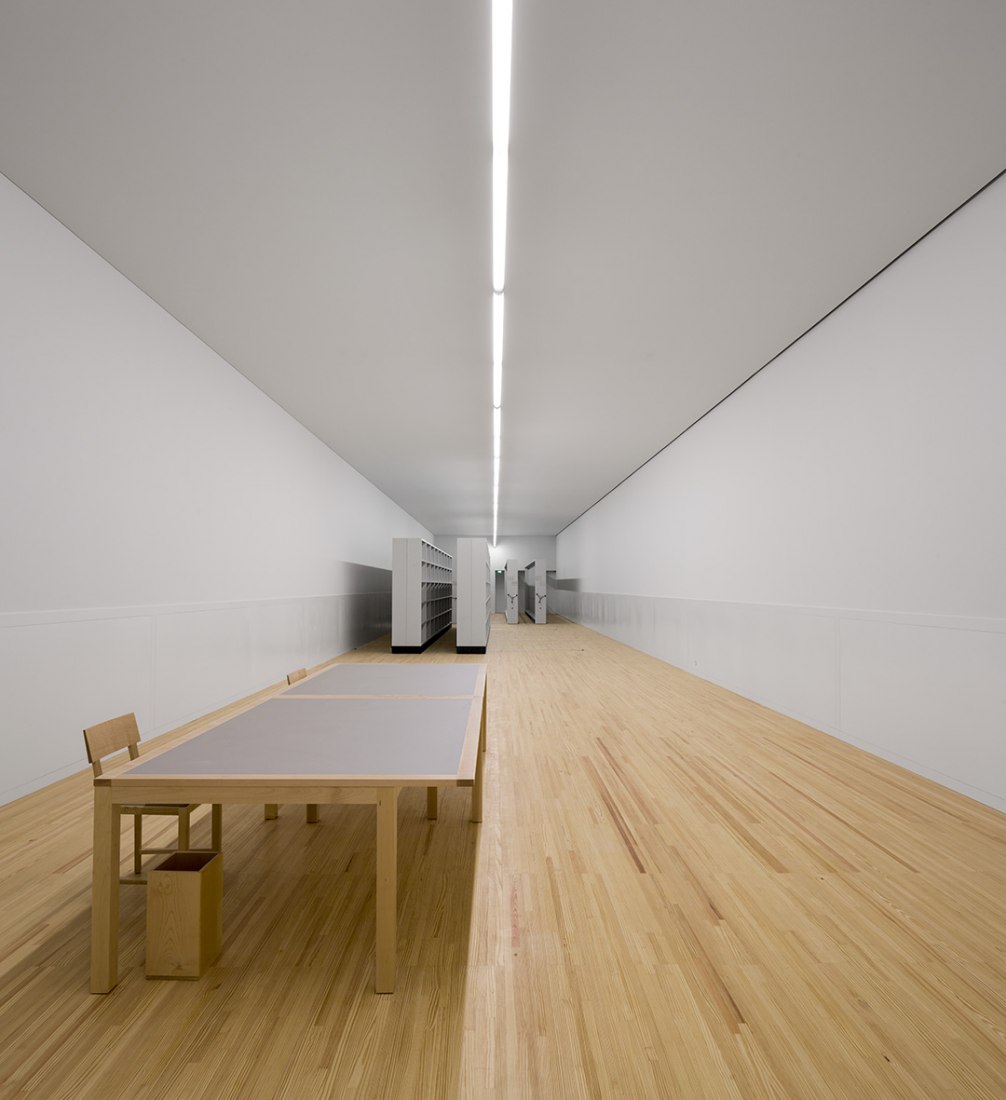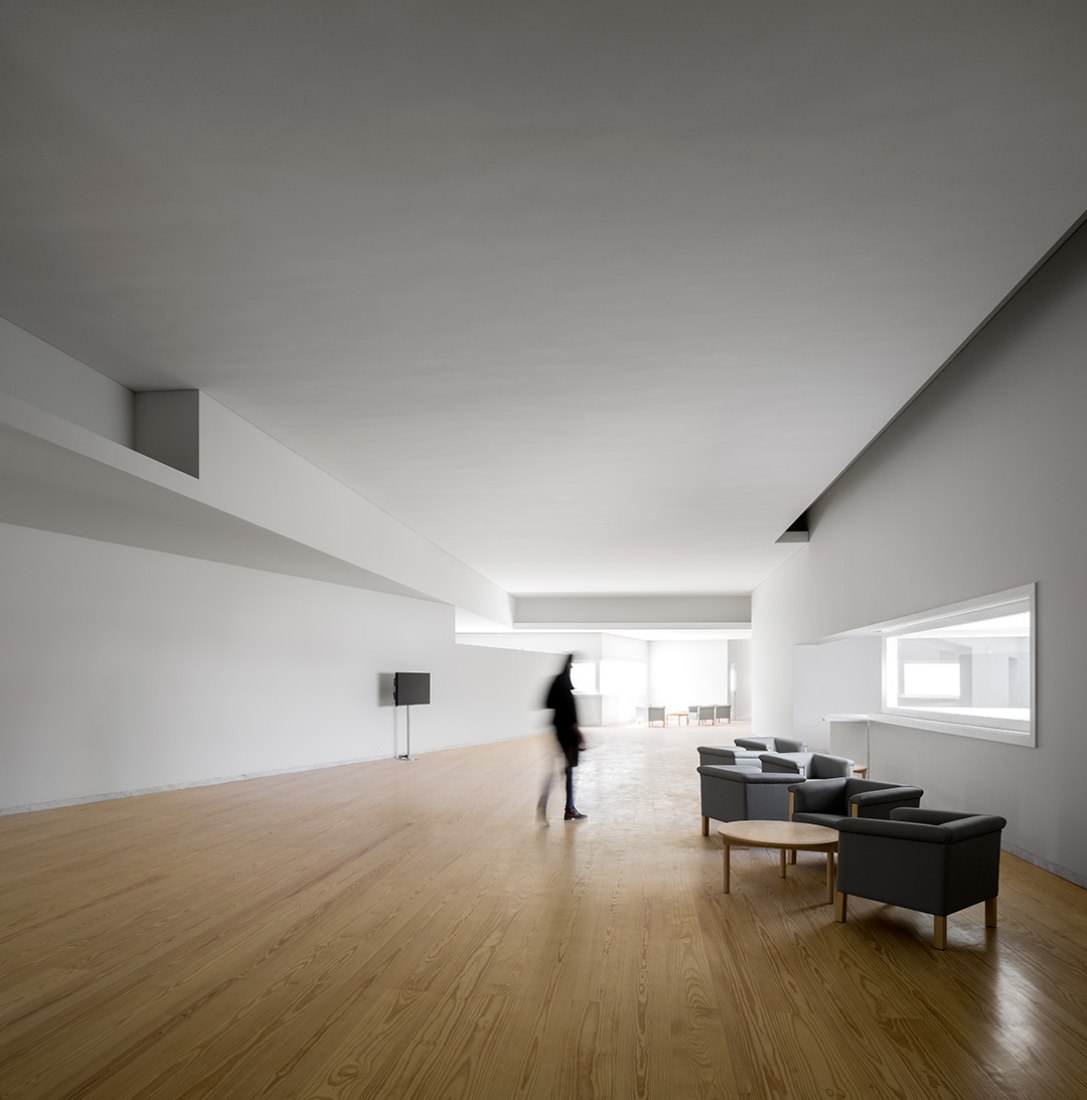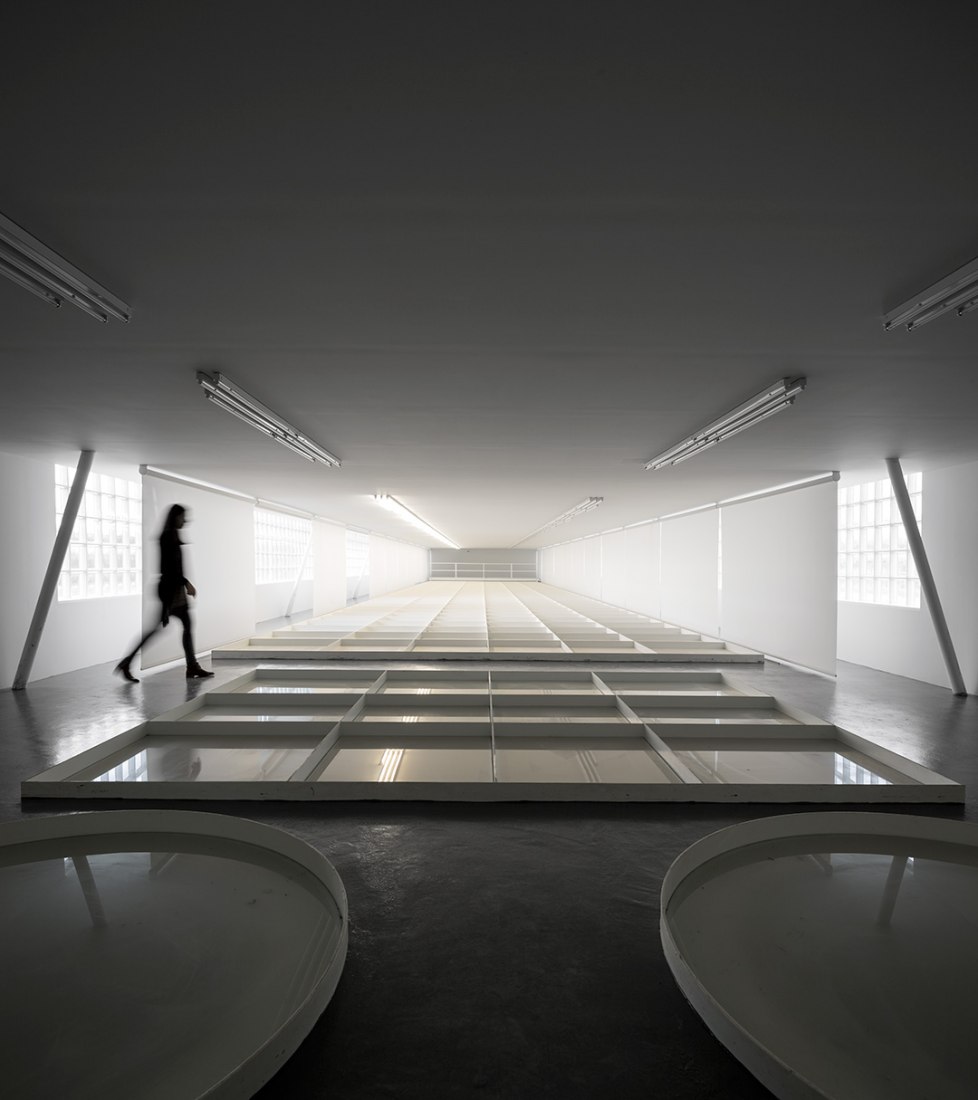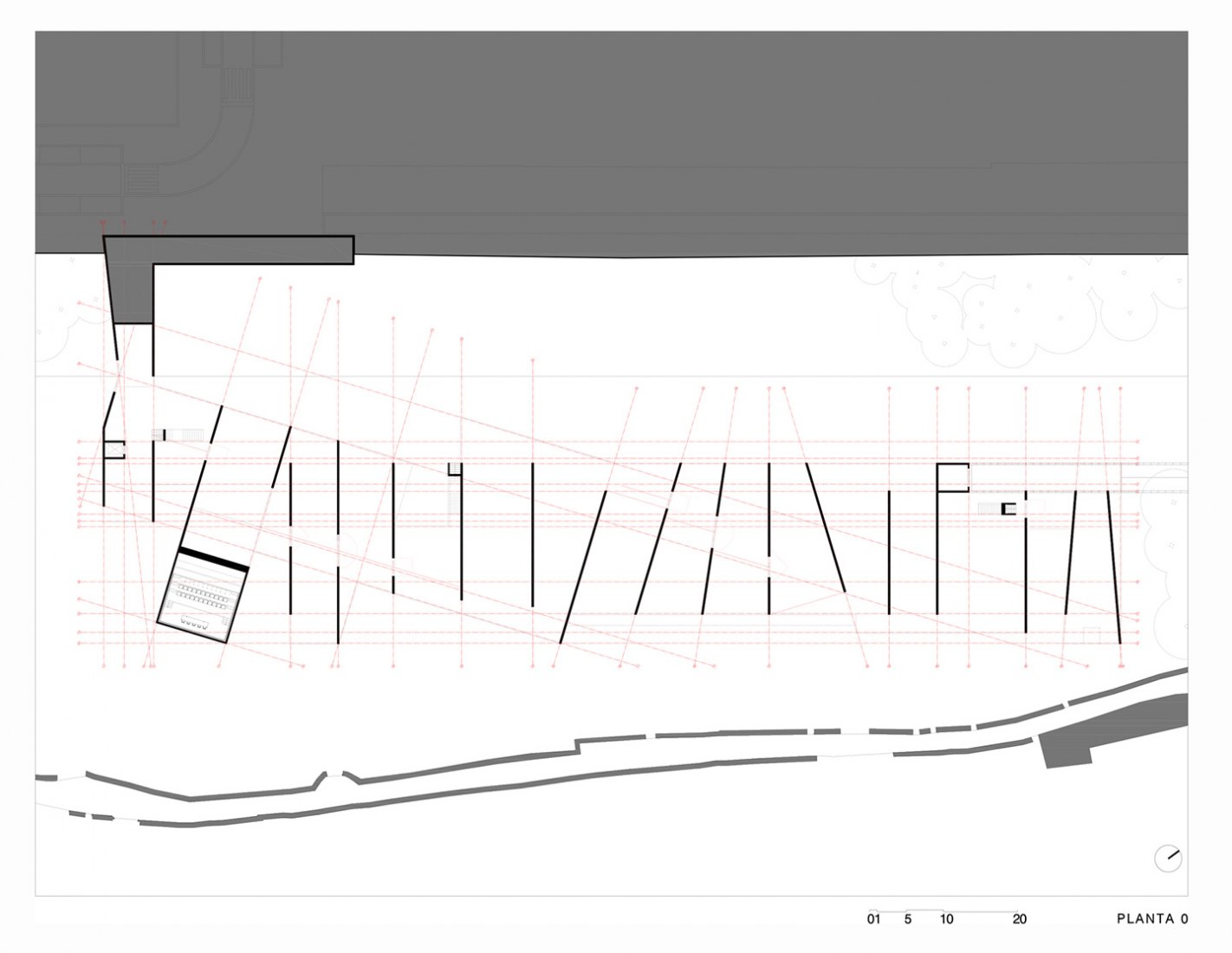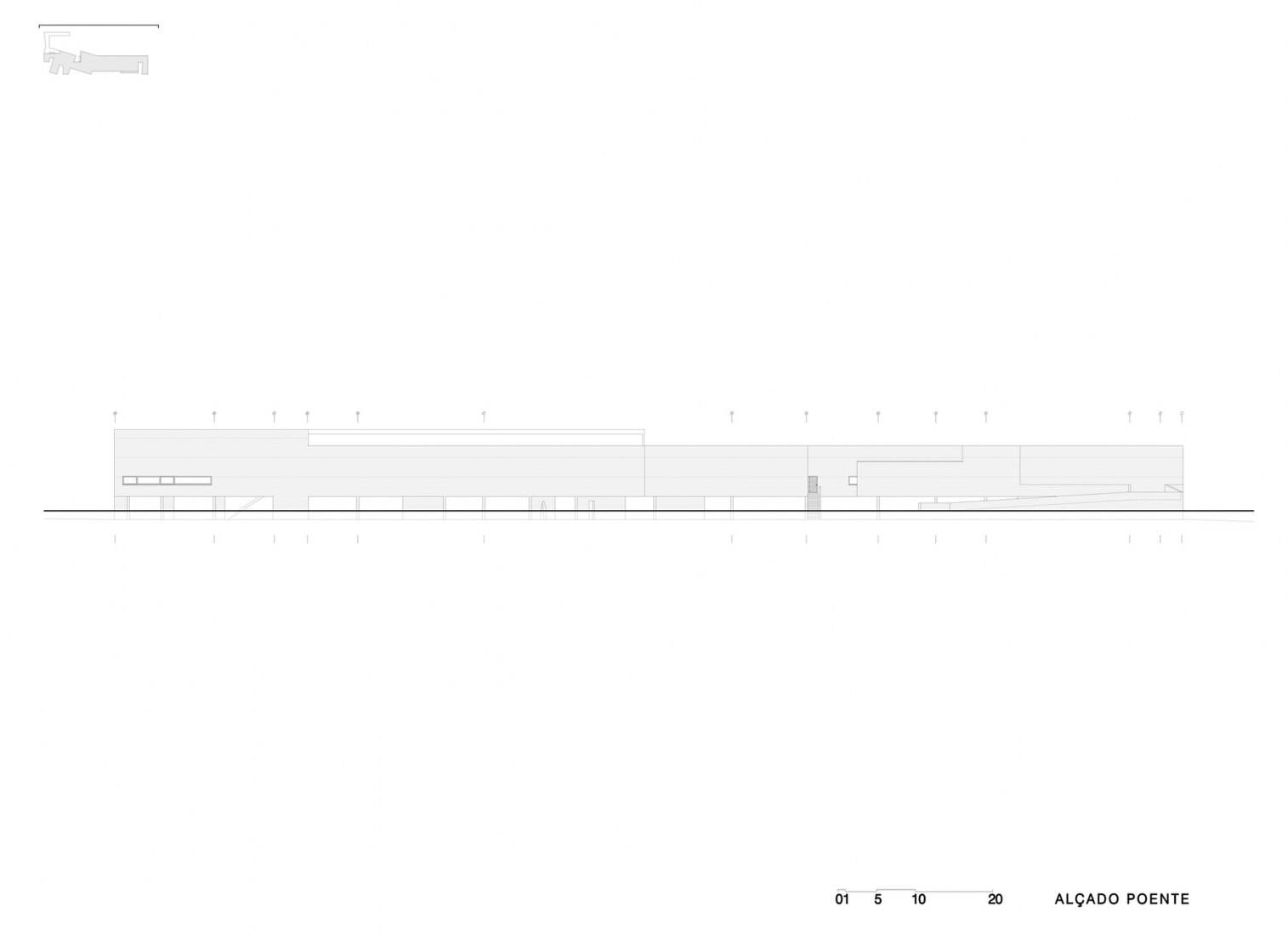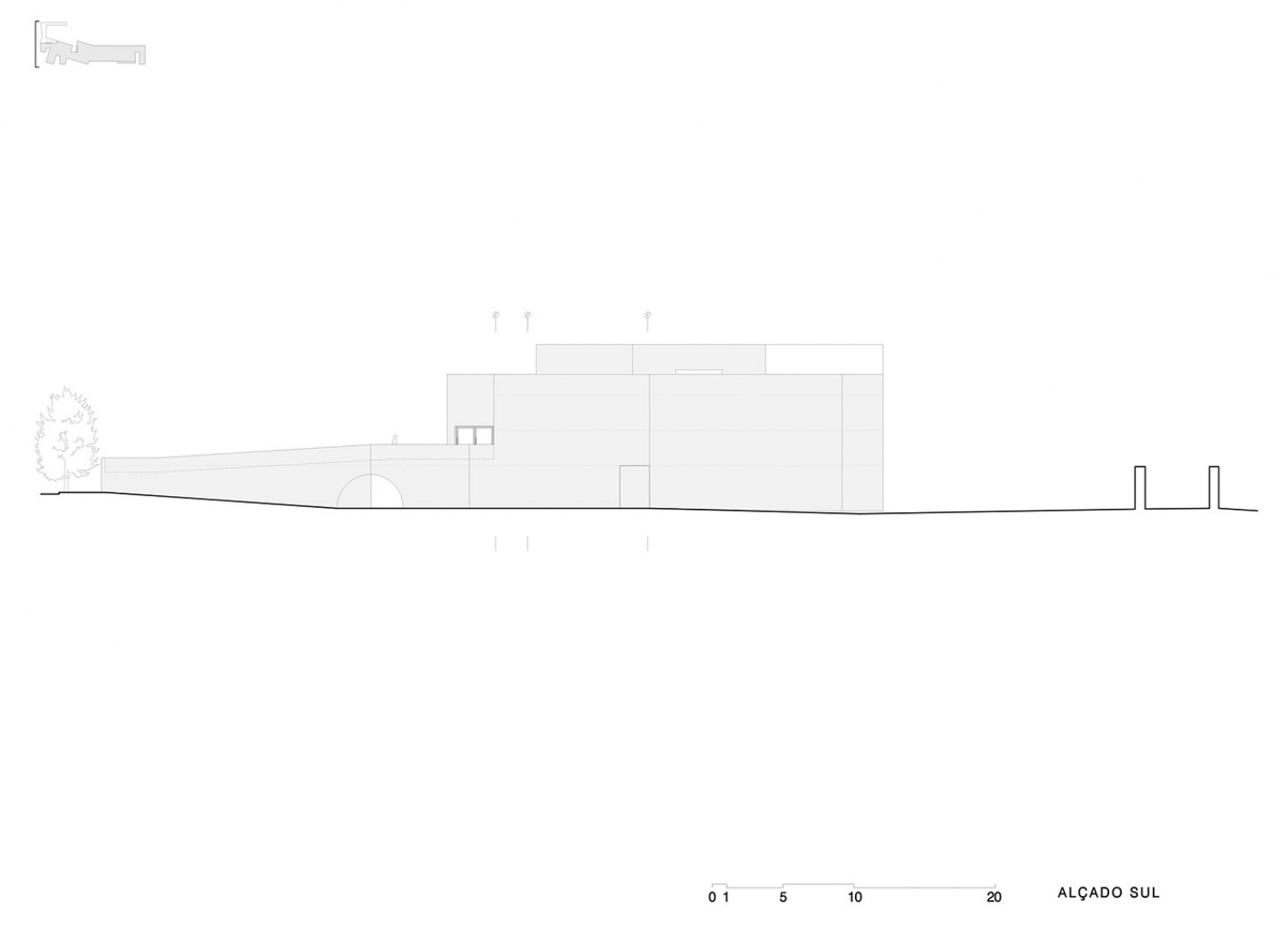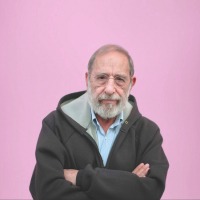Description of the project by Álvaro Siza
1. Nadir Afonso Foundation will be built in the city of Chaves, on land located on the right bank of Tâmega river, with plans elaborated in detail under the Polis program.
The area reserved for the building area is located in Longras, in the parish of Santa Maria Maior, and was defined as a rectangle parallel to the river, in the future marginal park between the new walkway/bikepath parallel to Avenida 5 de Outubro (northwest), Dr. Mário Soares avenue (northeast), the new street parallel to Longras street (southwest) and the river (southeast).
The single floor building stands on a concrete platform at elevation 351.50, resting on walls perpendicular to the river, in order to avoid possible flooding. The difference in height between the streets in the northwest and the natural terrain will be connected with a gentle slope.
2. The main access to the Foundation platform is through a ramp with a slight slope of 6%, from a walkway at 349.13 (not flood elevation). Two elevators and two staircases were designed, from natural ground, facing the southwest (public access) and northeast (service access, loading and unloading). A third emergency exit staircase is located in a central position, with access to the exhibition spaces.
3. The programmed interior spaces develop longitudinally in three sectors:
a) Lobby, reception, public elevator (13p.), library, auditorium for 100 people, dressing rooms, bathrooms, bookstore and cafeteria on the upper west side of the building.
b) Exhibition spaces in the central area, divided into three longitudinal wings, including a permanent exhibition room and archive room (northwest side), and temporary exhibition rooms (central and southeast wings).
The central wing exhibition room (8,70x36,5) can be divided into two smaller asymmetric rooms (8,70x12,50 + 8,70x23,85), with a continuous skylight. The east wing is illuminated by a continuous horizontal opening to the river. The temporary exhibition hall will not have natural light in general, but only an opening from the yard that limits it.
c) The northeastern top of the building includes a central control and security area, a lift (3,45x2,5m), service stairs, reception and access to the archive (to the northwest); bathrooms, staff rooms and administration areas (to the southwest); visual arts workshop and Nadir Afonso workshop (with overhead light and river views).
4. On the top floor, with access from the security control center, there are a series of technical spaces (indoor and outdoor terrace), which facilitate access to the vents. A second technical space is located on the auditorium.
5. The building will be constructed with structural exposed white concrete walls; the roof is landscaped on almost its entire length, and the technical spaces are clad in zincalum plates. The interior finishes are wood flooring, drywall on walls and ceilings and white marble in water areas. The interior window frames are wood and stainless steel, while the exterior frames are wood and aluminum.
6. The outer covers are made of granite slabs on the stairs and access level; and white marble on the balconies. As for the proposed landscaping and exterior arrangements, the proposal provides cleaning and consolidation of the ruins of canelha of Longras, similar to what was done in the recent intervention on the banks of Tamega River and the preservation of some existing fruit trees.
As support for activities outside, the Foundation has provided a unique floor covering almost the entire length of the project area, with the exception of natural land that corresponds to the projection of the building, for which an ivy carpet is expected.
The proposed trees and shrubs consist mainly of native species, preferably from local seedlings or region. Its use is to establish plant masses able to create shades of protection necessary for the organization and reading of the space. The irrigation system is automatic through sprinklers and, in some cases, nebulizers and atomizers.
7. To the northwest, near the main entrance of the Foundation, there are two exclusive parking spaces for the disabled, who may enter the building through a ramp with a slope of 6%. Apart from this, we propose southwestern parking lots with four more places. Access to the building is via the elevator.
The foundation program is on a single floor: the access step to the building does not exceed 2 centimeters in height. In the auditorium, two places are designated for people with disabilities, which are at the same level as the access space. General health facilities also have spaces reserved for the disabled.





